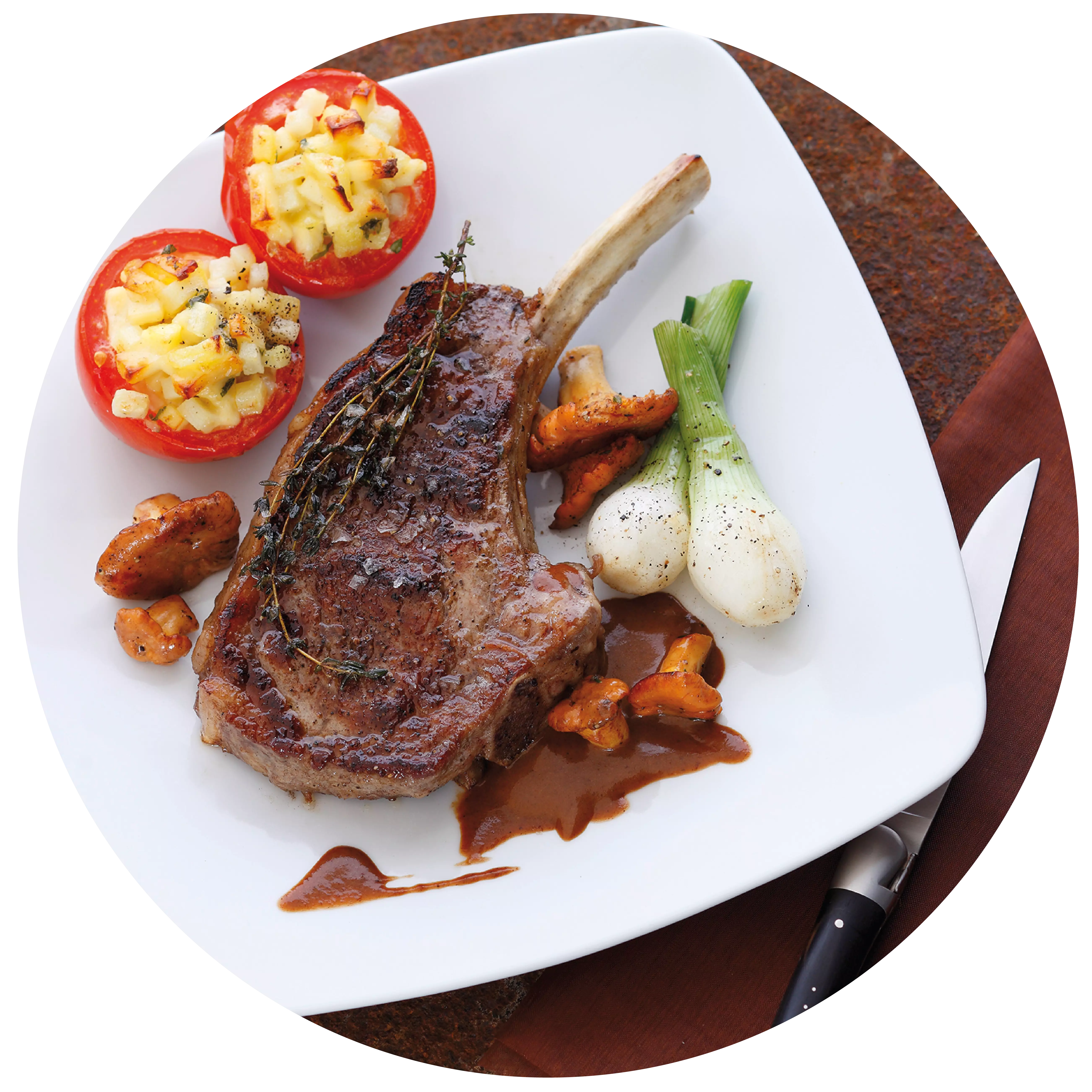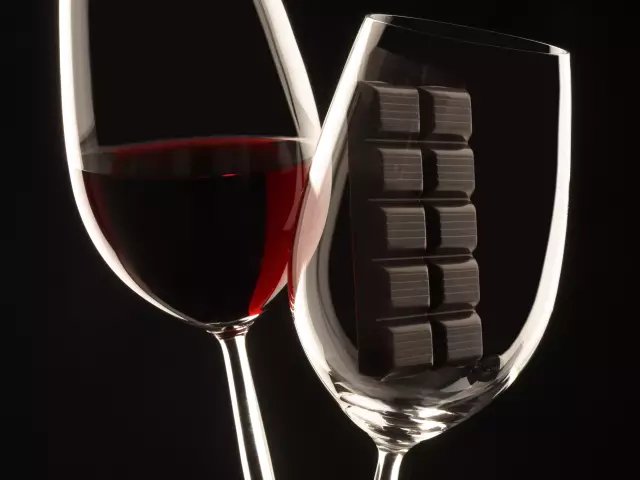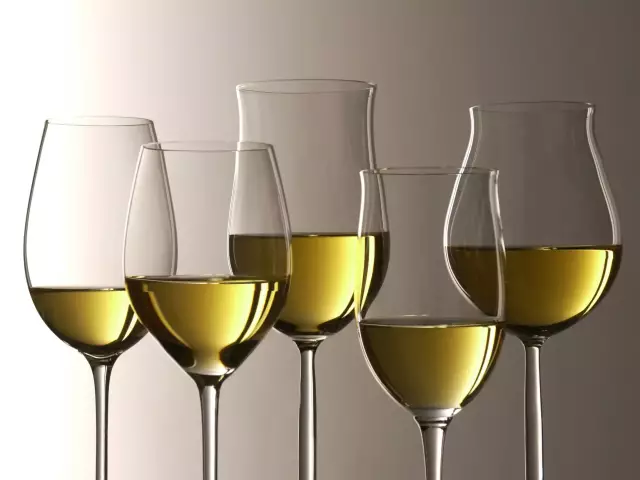Wine Tasting
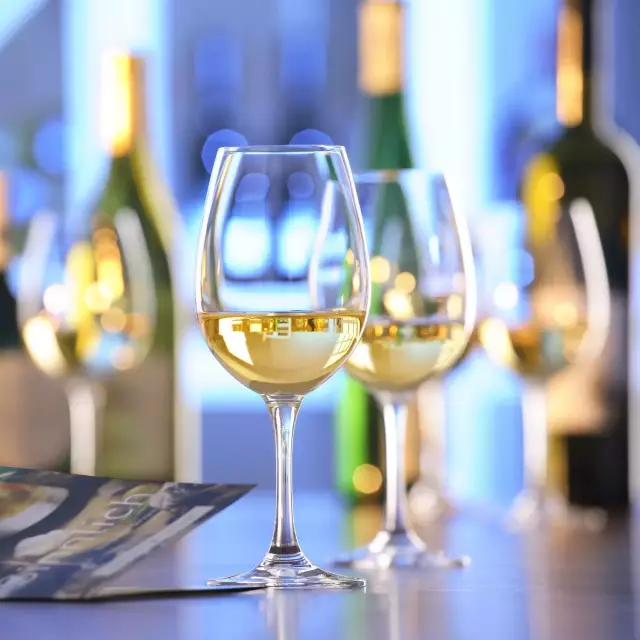
It's fun, it's easy to do, and you learn something from it, either with a group or just another friend. What do you need or need to know? Less than you think ...
Facts
-
9 - 11° C
is the recommended temperature for young, light wines
-
16 - 18° C
are perfect for ripe, full-bodied red wines
Enjoy with all your senses and have fun
The first thing to consider is the clarity and color of the wine. Both provide information about its condition and maturity. For example, the more mature a white wine is, the more golden it shimmers, right down to a rich dark amber.
It is not only the eye that anticipates enjoyment by swirling the glass. The wine also releases its aroma and bouquet into the air. Capturing this scent and translating it to words requires some practice. After all, most people are not very trained to describe their olfactory sensations in words. What helps is the comparison with familiar aromas. Does the wine conjure images of fruits like apples, berries or peaches? Does it have a hint of spring flowers or fresh green fields? Does it smell slightly of wood or something like vanilla? A wine aroma wheel can help you to express your sensory impressions whilst smelling and tasting.
The taste of a wine unfolds in different parts of the mouth. What helps the wine and the taste buds is air. This explains why some wine lovers slurp the wine or draw a little air through the wine and let the wine roll over the tongue. This is the only way to perceive all taste and aroma nuances.
Theme your wines
In order to not overwhelm the sense of taste during an extensive wine tasting, it is advisable to slowly increase: light before heavy, dry before sweet, young before old. Of course, you can also try only white or only red, only dry or only more mature wines – the choice is yours.
Which wine you put together for a sample is entirely up to you. How about a selection from a particular growing region, for example? Then you can discover a characteristic taste typical for the area.
Or you can compare wines of one grape variety, for example Riesling, from different cultivation areas. With the same vintage and the same quality level (such as Kabinett or Spätlese) you will be able to taste astonishing differences. Other ideas for a wine tasting are a quality level tasting, vintage tasting or a surprise wine tasting, where your guests bring their favorite wines.
Little effort, much delight
There is not much to prepare for a wine tasting. Of course, you need the wines and should ensure the right temperature: cool white wine in the refrigerator to 7 - 8 degrees Celsius; red wine is best offered at around 16 degrees Celsius.
If you want to be precise, you can adhere to the following recommendations:
- Young, light white wines e.g. Riesling Kabinett 9 - 11°C
- Ripe, strong white wines, e.g. Pinot Blanc late harvest 11 - 13°C
- Rosé wines, e.g. Weißherbst 9 - 13°C
- Young, light red wines, e.g. Portuguese or Trollinger 14 - 16°C
- Ripe, full-bodied red wines, e.g. Pinot Noir late harvest 16 - 18°C
- Rich and tannic red wines, e.g. from barriques 18 - 20°C
There are two important points to note about the wine glass. Firstly, the glass should have a tulip-shaped bowl for the bouquet to fully unfold - bowls for white wine are smaller than for red wines. Secondly, the glass should be clear and have a stem that you can hold so that you can judge the color without fingerprints. (see also wine glass)
For the wine tasting itself, bread rolls and fresh water are served. A bite of bread between the tasted wines neutralizes the taste. Afterwards, you can have a hearty snack and enjoy the previously tasted wines fully with food.
Enjoy!
Opening a wine bottle is an anticipation enjoyed throughout a tasting. The amount opened is up to you. A small wine tasting can involve 4 - 5 bottles. As the number increases, for example to 12 - 14 wines, the ability of the taste buds to differentiate sometimes decreases.
Uncorking should be done as gently as possible. It is best to use a corkscrew with large turns as it grips the cork without cork crumbs getting into the wine. This is particularly important with older wines when the cork has become brittle. White wines should be opened just before serving.
Rich red wines should be opened much earlier. In order to perceive the scent and aroma of the wine intensely, the wine glasses should only be filled halfway.
Tasting can be studied
As well as trade and gastronomy, wine enthusiasts are also very interested in wine seminars, therefore the DWI has developed a seminar especially tailored to the needs of private wine lovers. The new wine connoisseur seminar is a real treat for wine lovers wanting detailed knowledge, with practice and theory complementing each other in an extremely entertaining way.
What does it mean when a wine forms "chruch windows" when swirled in a glass?
The so-called church windows provide information about the viscosity and thus concentration of various ingredients of the wine. The higher the viscosity, the more it draws streaks when swirled - the church windows.
Varietals

More recipe ideas
to sweet selections Apple doughnuts with vanilla sauce
to sweet selections
- 5 große, säuerliche Äpfel
- 200 Gramm Mehl
- 2 Eier
- 250 ml Milch
- 2 EL Rum
- Nach Bedarf Schmalz oder Öl
- Nach Belieben Zimt, Zucker, Salz
Peel the apples and remove the core, cut into finger-thick, even slices. Drizzle with rum and sugar. Leave to infuse.
Stir the batter, it should be quite thick. Turn the apple rings in it and bake floating in hot fat until golden brown.
<p
<p>Drain on kitchen paper and serve hot with cinnamon and sugar.
- Riesling (süß & edelsüß)
- Scheurebe (süß & edelsüß)
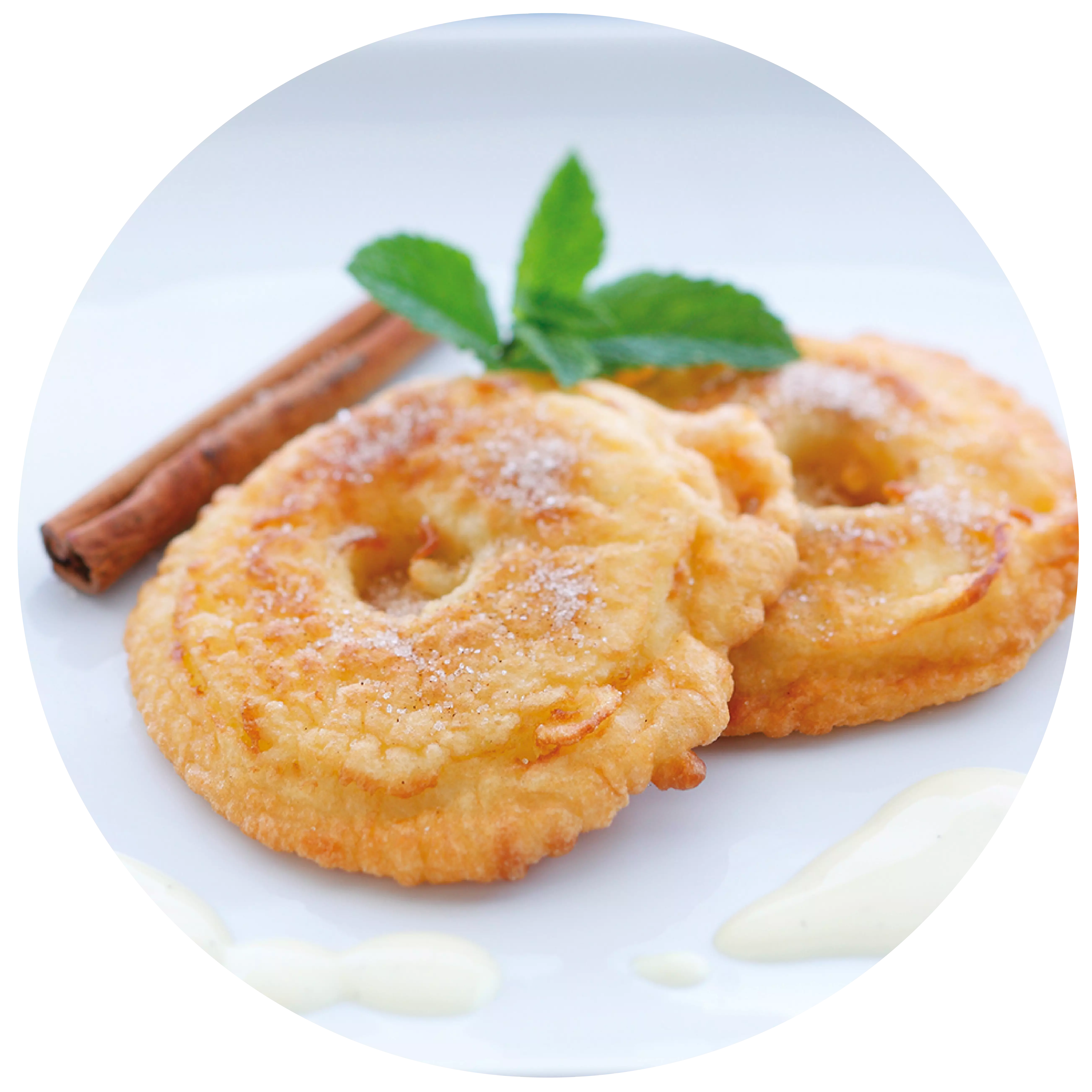
Asparagus again at last Rocket salad with green asparagus and turkey breast fillet
A light, young Rivaner goes well with green asparagus.
- 400g Grüner Spargel
- 100g Rucola
- 400g Putenbrustfilets
- 200g Kirschtomaten
- 4 Eier
- 1 EL Basilikum-Pesto
- 1TL Butter
- 2 EL Olivenöl
- 2 EL Weißwein-Essig
- etwas Salz, Pfeffer
Peel the lower third of the asparagus and cut off the ends. Cut the spears in half and cook in boiling salted water with 1 tsp butter for approx. 7 mins. Set the asparagus water aside.
Cook the eggs until almost firm (the yolk should still be a little soft), peel and cut into quarters. Cut the turkey breast fillet into strips.
Fry the pine nuts briefly without fat in a non-stick pan. Then add a little fat directly to the pan and fry the turkey breast strips. Then keep them warm.
Mix the pesto with the white wine vinegar, 5 tbsp of the asparagus water, the olive oil and salt and pepper in a salad bowl to make a dressing.
Wash the rocket and add to the dressing. Halve the cherry tomatoes and add to the bowl. Mix in the asparagus and turkey. Finally, garnish with the quartered eggs and pine nuts.</p
<p>This goes well with freshly baked ciabatta bread.
Wine recommendation:
A light Rivaner from the last harvest, fresh as spring, with delicate flavours.
- Müller-Thurgau (brut)
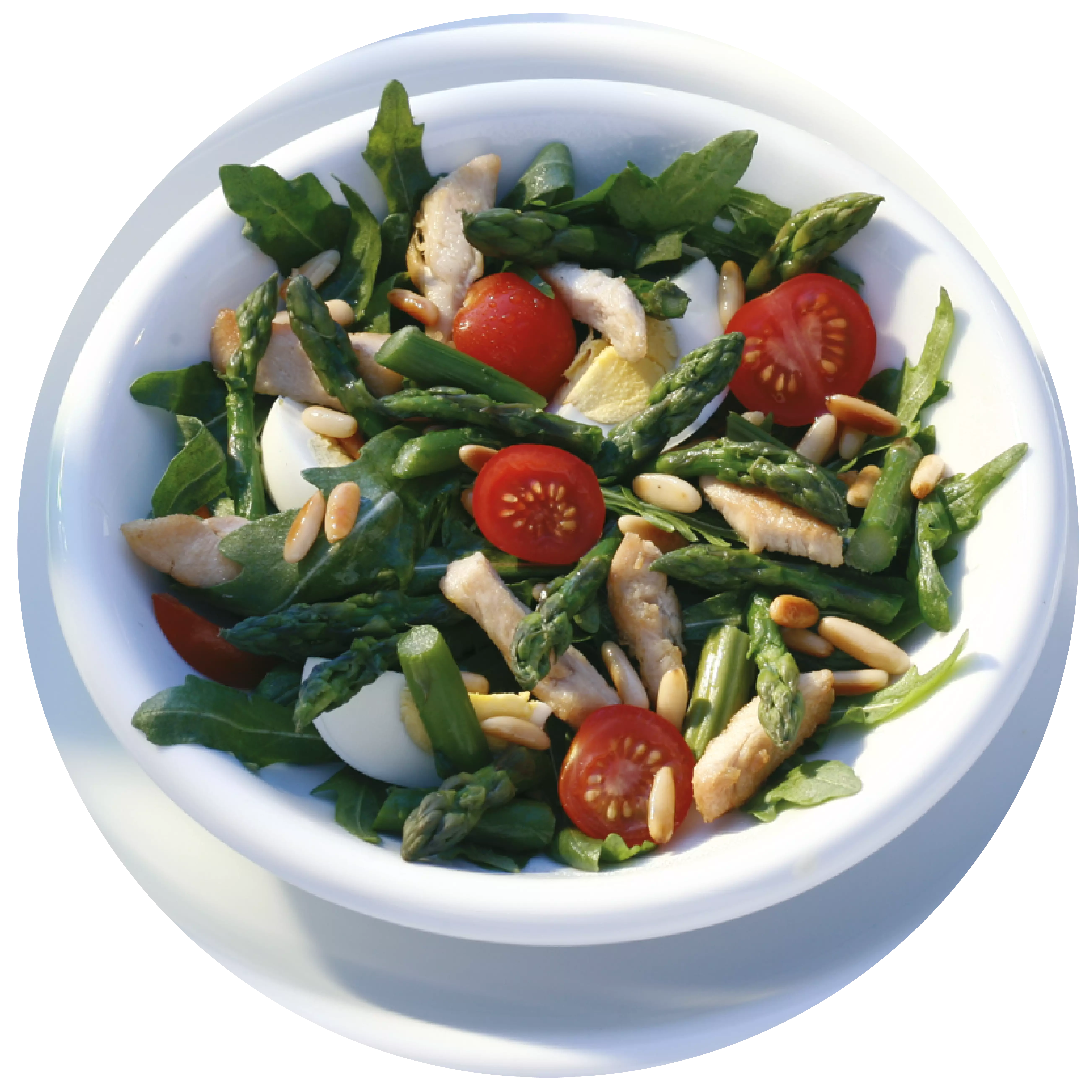
with cinnamon and sugar Odenwald apple soufflé
with cinnamon and sugar
- 1 kg Äpfel
- 250 Gramm Semmelbrösel
- 125 Gramm Zucker
- 2 EL Butter
- 1/2 TL Zimt
- 1 Msp. gemahlene Nelken
- 50 Gramm Rosinen
- 100 ml trockener Weißwein
- 1 EL Rum
- zum Bestreuen Zimt & Zucker
Sauté the breadcrumbs, butter, spices and 2 tbsp sugar in a pan. Peel the apples and cut into slices. Sauté in white wine with rum and sugar until the liquid has almost evaporated.
<p
<p>Fill the greased springform tin alternately with the breadcrumb mixture and apples (bottom and top layer of breadcrumb mixture).
Bake for one ½ hour at 140 °C. Sprinkle with cinnamon and sugar.
- Riesling (lieblich)
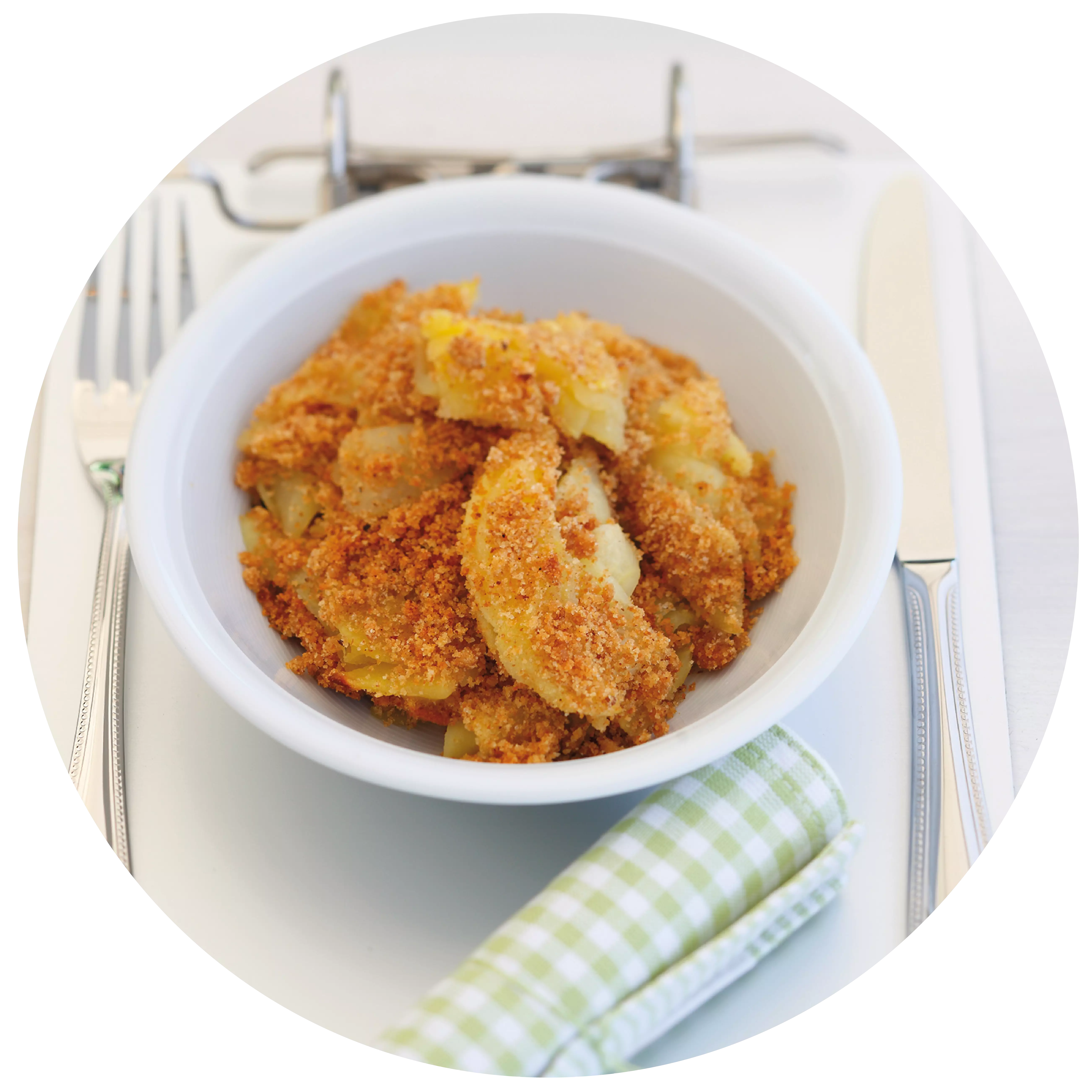
with chanterelle and onion leek, served with potato and grilled cheese ragout in grilled tomato Chop of Hunsrück veal
with chanterelle and onion leek, served with potato and grilled cheese ragout in grilled tomato
- 4 x 300 Gramm Kotelettes
- 250 Gramm Pfifferlinge
- 4 große Kartoffeln
- 2 große Grilltomaten
- 180 Gramm Flammkäse
- 50 Gramm Knollensellerie
- 200 ml Spätburgunder
- 200 ml Sahne
- 50 Gramm Butterschmalz
- 2 EL Butter
- 1 EL Rapsöl
- 6 Stück Lauchzwiebeln
- 1 kleine Knoblauchzehe
- je 1 Zweig Thymian & Rosmarin
- je 1 TL Majoran & Oregano
- nach Belieben Salz & Pfeffer
Peel the potatoes, celery and garlic clove, crush the garlic and cut the potatoes and celery into small cubes. Heat the rapeseed oil in a pan, add the potato and celery cubes, sauté briefly and top up with ⅔ of the cream. Season with salt, pepper and the crushed garlic and leave to simmer for approx. 6 minutes. Add the oregano, marjoram,
add a little thyme and the diced flambé cheese and remove from the oven immediately.
Season the veal chops with pepper, fry in the pan in hot clarified butter for approx. 3 to 4 minutes on both sides and then cook in the oven at 160 degrees for 8 to 9 minutes. Then leave the meat to rest briefly.
Cut the grilled tomatoes in half, remove the skin, place on a baking tray and fill with the potato and flambé ragout. Place the baking tray in the oven with the chops for approx. 6 - 7 minutes. Add 1 tbsp of butter and the sprig of rosemary to the roasting mixture, deglaze with the Pinot Noir, reduce a little and refine with the remaining cream. Season to taste with salt and pepper.
Clean the chanterelles and spring onions. Wash the spring onions well, cut into 5 cm pieces, blanch briefly in salted water and rinse in ice water. Heat 1 tbsp butter in a pan, add the chanterelles and sauté for 2 - 3 minutes. Add the spring onions and the rest of the thyme and season with salt and pepper.
<p- Riesling (trocken)
